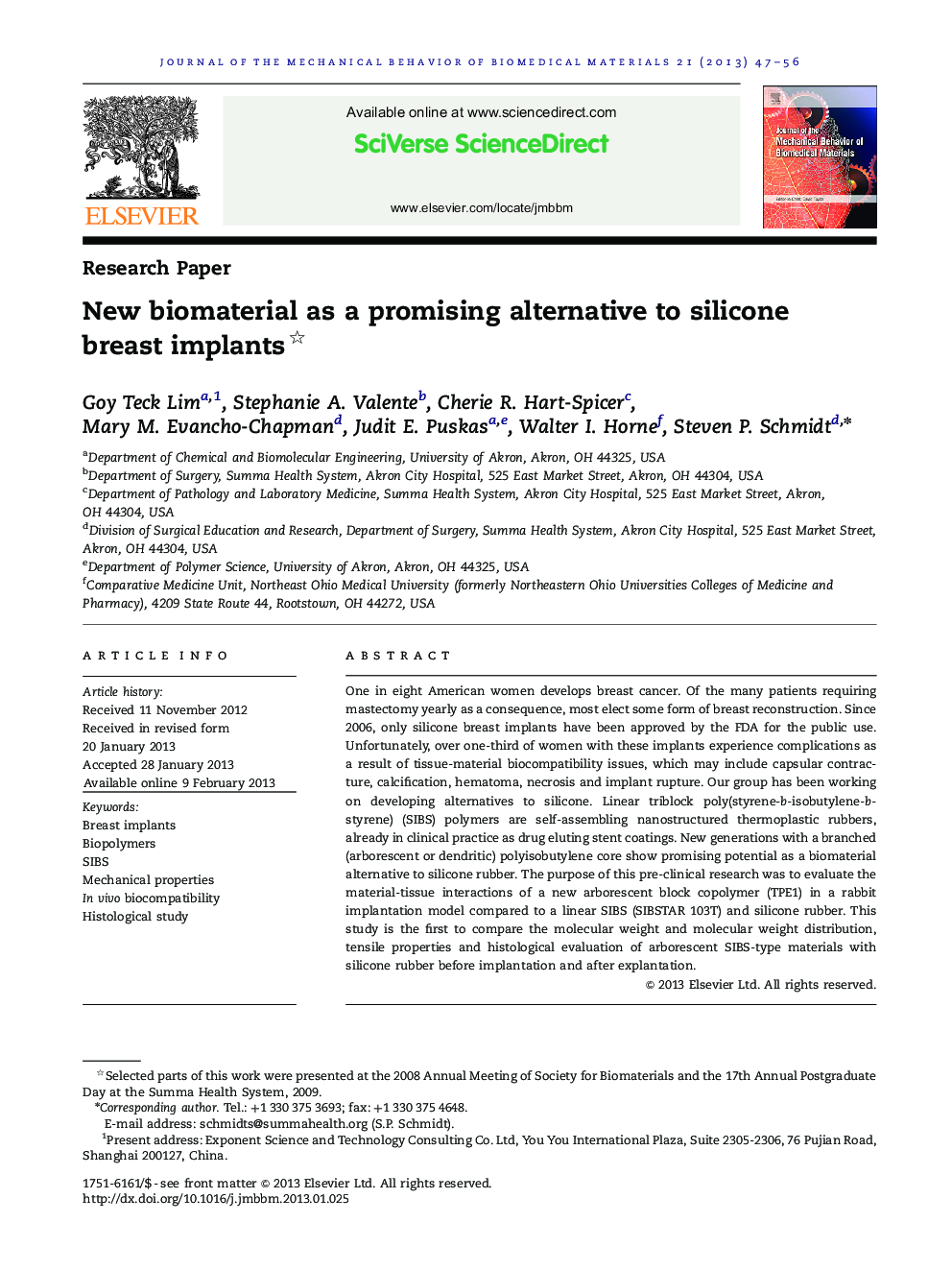| Article ID | Journal | Published Year | Pages | File Type |
|---|---|---|---|---|
| 810852 | Journal of the Mechanical Behavior of Biomedical Materials | 2013 | 10 Pages |
One in eight American women develops breast cancer. Of the many patients requiring mastectomy yearly as a consequence, most elect some form of breast reconstruction. Since 2006, only silicone breast implants have been approved by the FDA for the public use. Unfortunately, over one-third of women with these implants experience complications as a result of tissue-material biocompatibility issues, which may include capsular contracture, calcification, hematoma, necrosis and implant rupture. Our group has been working on developing alternatives to silicone. Linear triblock poly(styrene-b-isobutylene-b-styrene) (SIBS) polymers are self-assembling nanostructured thermoplastic rubbers, already in clinical practice as drug eluting stent coatings. New generations with a branched (arborescent or dendritic) polyisobutylene core show promising potential as a biomaterial alternative to silicone rubber. The purpose of this pre-clinical research was to evaluate the material-tissue interactions of a new arborescent block copolymer (TPE1) in a rabbit implantation model compared to a linear SIBS (SIBSTAR 103T) and silicone rubber. This study is the first to compare the molecular weight and molecular weight distribution, tensile properties and histological evaluation of arborescent SIBS-type materials with silicone rubber before implantation and after explantation.
